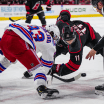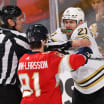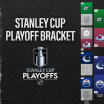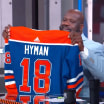As a result, their primary focus is to get to the net and make things happen offensively.
That's all fine and good. The tradeoff, however, is defense or, specifically, a lack thereof. Odd-man rushes in the transition game by the opposition thrive this time of year because of the uneven number of players with a nose for the net.
As a coach, you get that. You spent training camp implementing tweaks to your system, if not changing it altogether.
The trouble here is, for a good chunk of training camp and the preseason you are not featuring the lineup you'll be using opening night. Instead, you are mixing and matching veterans, prospects, guys on professional tryout contracts. You're doing that because you have to make decisions that are best for the organization, not just the parent club.
For example, you might be taking a long look at a couple of guys you know might be ticketed for the farm because they might be the top candidates to be called up in case of an injury or trade. Seeing how they fare against NHLers often can't be gauged in just a couple of practices or one preseason game.
Your actual practice time with your final 23-man roster often doesn't get into high gear until the final few days before the season opener. And even then, it can be hectic and chaotic through the first couple of weeks of the season.
Take the Maple Leafs, for example. They had three games in four nights and four games in six nights to start the season. I'm sure coach Mike Babcock would have liked some more practice time, but you have to be careful not to burn out your guys too soon. It's a balancing act right from the get-go.
Add it all up and it takes time for the players to get into the flow of the defensive side of the game. It's much easier for guys to play offense. And, for most, more fun too.
That's why, as a coach, October is an important time in the video room. You have to keep pointing out to players where the leaks are in their own end.
Eventually, they'll catch on. At least you hope they do. That's why some of the offensive explosions and comebacks we've seen recently don't really catch coaches off guard.
Now, if your team is still coughing up 4-1 leads in December, well, that's the foundation for legitimate concern.


















